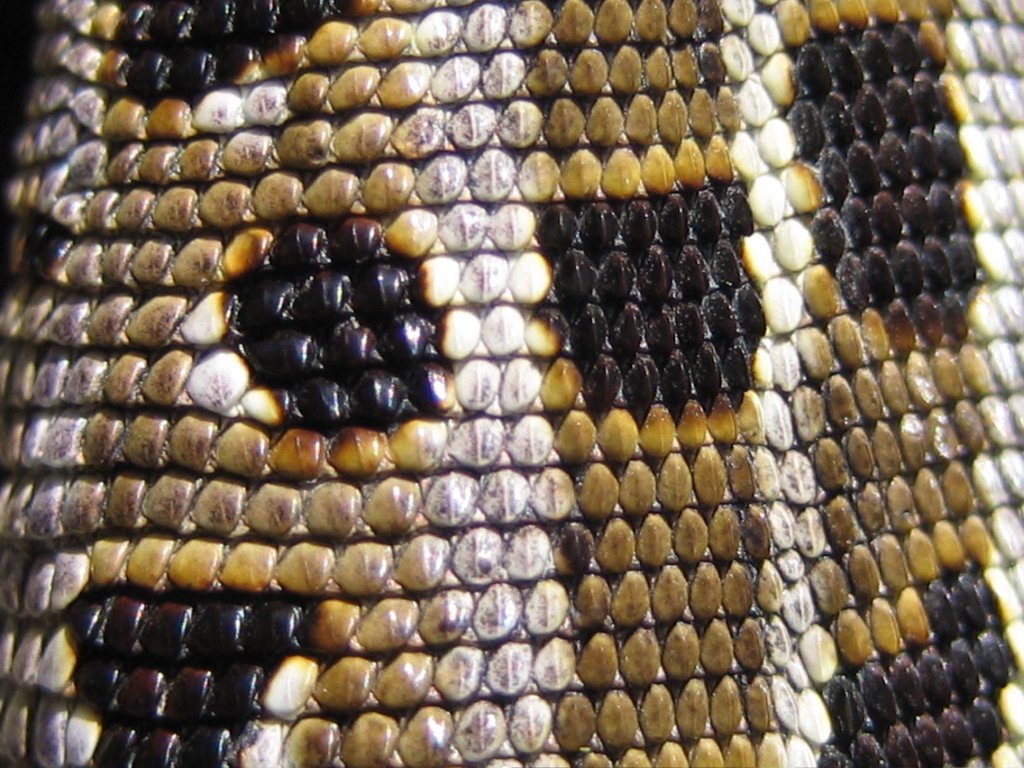|
Praeteropus
''Praeteropus'' is a genus of worm-skinks, smallish smooth-scaled burrowing lizards in the Family (biology), family Scincidae. The genus is Endemism, endemic to the eastern half of Australia. The genus belongs to a clade in the ''Sphenomorphus'' group which contains such Genus, genera as ''Ctenotus'' and the close relatives ''Eulamprus'' and ''Gnypetoscincus'' (Austin & Arnold 2006). Species The following species are recognized as being valid.. www.reptile-database.org. *''Praeteropus auxilliger'' *''Praeteropus brevicollis'' – short-necked worm-skink (northeastern Australia) *''Praeteropus gowi'' – Gow's burrowing skink, speckled worm-skink (northeastern Australia) *''Praeteropus monachus'' ''Nota bene'': A Binomial nomenclature, binomial authority in parentheses indicates that the species was originally described in a genus other than ''Praeteropus''. References Praeteropus, Lizard genera Taxa named by Mark Norman Hutchinson Taxa named by Patrick J. Couper Ta ... [...More Info...] [...Related Items...] OR: [Wikipedia] [Google] [Baidu] |
Praeteropus Gowi
''Praeteropus gowi'', also known commonly as Gow's burrowing skink and the speckled worm-skink, is a species of lizard in the family Scincidae. The species is endemic to Queensland in Australia. Etymology The specific name, ''gowi'', is in honor of Australian herpetologist Graeme Francis Gow. Beolens, Bo; Watkins, Michael; Grayson, Michael (2011). ''The Eponym Dictionary of Reptiles''. Baltimore: Johns Hopkins University Press. xiii + 296 pp. . (''Anomalopus gowi'', p. 105). Habitat The preferred natural habitats of ''P. gowi'' are forest and shrubland. Description ''P. gowi'' is limbless. It has scaly, movable eyelids. It does not have external ear openings. Reproduction ''P. gowi'' is oviparous. References Further reading * Cogger HG (2014). ''Reptiles and Amphibians of Australia, Seventh Edition''. Clayton, Victoria, Australia: CSIRO Publishing. xxx + 1,033 pp. . (''Anomalopus gowi)''. * Greer AE, Cogger HG (1985). "Systematics of the reduce-limbed and limbless ... [...More Info...] [...Related Items...] OR: [Wikipedia] [Google] [Baidu] |
Praeteropus Monachus
''Praeteropus monachus'' is a species of skink Skinks are lizards belonging to the family Scincidae, a family in the infraorder Scincomorpha. With more than 1,500 described species across 100 different taxonomic genera, the family Scincidae is one of the most diverse families of lizards. Ski ... found in Queensland in Australia. References {{Taxonbar, from=Q110130922 Praeteropus Reptiles described in 2021 Taxa named by Mark Norman Hutchinson Taxa named by Patrick J. Couper Taxa named by Andrew P. Amey ... [...More Info...] [...Related Items...] OR: [Wikipedia] [Google] [Baidu] |
Praeteropus Brevicollis
The short-necked worm-skink (''Praeteropus brevicollis'') is a species of skink Skinks are lizards belonging to the family Scincidae, a family in the infraorder Scincomorpha. With more than 1,500 described species across 100 different taxonomic genera, the family Scincidae is one of the most diverse families of lizards. Ski ... found in Queensland in Australia. It has a similar resemblance to an Earthworm. References {{Taxonbar, from=Q2852281 Praeteropus Reptiles described in 1985 Taxa named by Allen Eddy Greer Taxa named by Harold Cogger ... [...More Info...] [...Related Items...] OR: [Wikipedia] [Google] [Baidu] |
Praeteropus Auxilliger
''Praeteropus auxilliger'' is a species of skink Skinks are lizards belonging to the family Scincidae, a family in the infraorder Scincomorpha. With more than 1,500 described species across 100 different taxonomic genera, the family Scincidae is one of the most diverse families of lizards. Ski ... found in Queensland in Australia. References {{Taxonbar, from=Q110130921 Praeteropus Reptiles described in 2021 Taxa named by Mark Norman Hutchinson Taxa named by Patrick J. Couper Taxa named by Andrew P. Amey ... [...More Info...] [...Related Items...] OR: [Wikipedia] [Google] [Baidu] |
Mark Norman Hutchinson
Mark may refer to: Currency * Bosnia and Herzegovina convertible mark, the currency of Bosnia and Herzegovina * East German mark, the currency of the German Democratic Republic * Estonian mark, the currency of Estonia between 1918 and 1927 * Finnish markka ( sv, finsk mark, links=no), the currency of Finland from 1860 until 28 February 2002 * Mark (currency), a currency or unit of account in many nations * Polish mark ( pl, marka polska, links=no), the currency of the Kingdom of Poland and of the Republic of Poland between 1917 and 1924 German * Deutsche Mark, the official currency of West Germany from 1948 until 1990 and later the unified Germany from 1990 until 2002 * German gold mark, the currency used in the German Empire from 1873 to 1914 * German Papiermark, the German currency from 4 August 1914 * German rentenmark, a currency issued on 15 November 1923 to stop the hyperinflation of 1922 and 1923 in Weimar Germany * Lodz Ghetto mark, a special currency for Lodz Ghetto. * R ... [...More Info...] [...Related Items...] OR: [Wikipedia] [Google] [Baidu] |
Taxa Named By Mark Norman Hutchinson
In biology, a taxon (back-formation from ''taxonomy''; plural taxa) is a group of one or more populations of an organism or organisms seen by taxonomists to form a unit. Although neither is required, a taxon is usually known by a particular name and given a particular ranking, especially if and when it is accepted or becomes established. It is very common, however, for taxonomists to remain at odds over what belongs to a taxon and the criteria used for inclusion. If a taxon is given a formal scientific name, its use is then governed by one of the nomenclature codes specifying which scientific name is correct for a particular grouping. Initial attempts at classifying and ordering organisms (plants and animals) were set forth in Carl Linnaeus's system in ''Systema Naturae'', 10th edition (1758), as well as an unpublished work by Bernard and Antoine Laurent de Jussieu. The idea of a unit-based system of biological classification was first made widely available in 1805 in the intr ... [...More Info...] [...Related Items...] OR: [Wikipedia] [Google] [Baidu] |
Lizard Genera
Lizards are a widespread group of squamate reptiles, with over 7,000 species, ranging across all continents except Antarctica, as well as most oceanic island chains. The group is paraphyletic since it excludes the snakes and Amphisbaenia although some lizards are more closely related to these two excluded groups than they are to other lizards. Lizards range in size from chameleons and geckos a few centimeters long to the 3-meter-long Komodo dragon. Most lizards are quadrupedal, running with a strong side-to-side motion. Some lineages (known as "legless lizards"), have secondarily lost their legs, and have long snake-like bodies. Some such as the forest-dwelling '' Draco'' lizards are able to glide. They are often territorial, the males fighting off other males and signalling, often with bright colours, to attract mates and to intimidate rivals. Lizards are mainly carnivorous, often being sit-and-wait predators; many smaller species eat insects, while the Komodo eats mammals ... [...More Info...] [...Related Items...] OR: [Wikipedia] [Google] [Baidu] |
Binomial Nomenclature
In taxonomy, binomial nomenclature ("two-term naming system"), also called nomenclature ("two-name naming system") or binary nomenclature, is a formal system of naming species of living things by giving each a name composed of two parts, both of which use Latin grammatical forms, although they can be based on words from other languages. Such a name is called a binomial name (which may be shortened to just "binomial"), a binomen, name or a scientific name; more informally it is also historically called a Latin name. The first part of the name – the '' generic name'' – identifies the genus to which the species belongs, whereas the second part – the specific name or specific epithet – distinguishes the species within the genus. For example, modern humans belong to the genus '' Homo'' and within this genus to the species '' Homo sapiens''. '' Tyrannosaurus rex'' is likely the most widely known binomial. The ''formal'' introduction of this system of naming species is ... [...More Info...] [...Related Items...] OR: [Wikipedia] [Google] [Baidu] |
Nota Bene
(, or ; plural form ) is a Latin phrase meaning "note well". It is often abbreviated as NB, n.b., or with the ligature and first appeared in English writing . In Modern English, it is used, particularly in legal papers, to draw the attention of the reader to a certain (side) aspect or detail of the subject being addressed. While ''NB'' is also often used in academic writing, ''note'' is a common substitute. The markings used to draw readers' attention in medieval manuscripts are also called marks. The common medieval markings do not, however, include the abbreviation ''NB''. The usual medieval equivalents are anagrams from the four letters in the word , the abbreviation DM from ("worth remembering"), or a symbol of a little hand (☞), called a manicule or index, with the index finger pointing towards the beginning of the significant passage.Raymond Clemens and Timothy Graham, Introduction to Manuscript Studies (Ithaca: Cornell University Press, 2007), p. 44. S ... [...More Info...] [...Related Items...] OR: [Wikipedia] [Google] [Baidu] |
Harold Cogger
Harold George "Hal" Cogger (born 4 May 1935) is an Australian herpetologist. He was curator of reptiles and amphibians at the Australian Museum from 1960 to 1975, and Deputy Director of the museum from 1976 to 1995. He has written extensively on Australian herpetology, and was the first author to create a field guide for all Australian frogs and reptiles. Cogger was made an honorary Doctor of Science in 1997. At least eight reptile taxa have been named after Cogger, including one genus, six species, and one subspecies: '' Coggeria'', ''Ctenotus coggeri'', ''Emoia coggeri'', ''Geomyersia coggeri'', ''Hydrophis coggeri'', ''Lampropholis coggeri'', ''Oedura coggeri ''Oedura coggeri'', commonly known as the northern spotted velvet gecko, is a species of gecko, a lizard in the family Diplodactylidae. The species is endemic to Queensland, Australia. Etymology The specific name, ''coggeri'', is in honor of Au ...'', and '' Diporiphora nobbi coggeri''. Beolens, Bo; Watkins, M ... [...More Info...] [...Related Items...] OR: [Wikipedia] [Google] [Baidu] |



